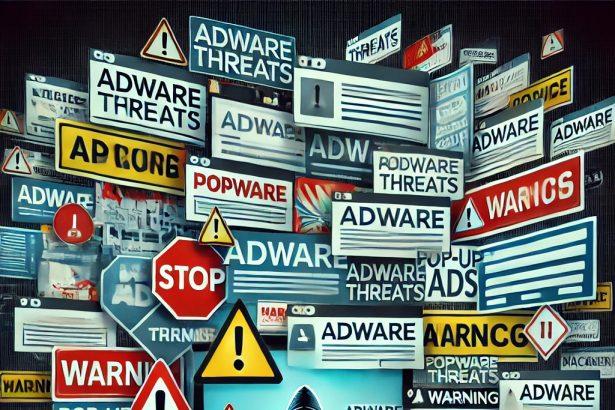A surge of deceptive “CAPTCHA”-style pop-ups has recently plagued torrent, streaming, and dubious download sites. Visitors encounter a faux video player insisting they click Allow to prove they’re not robots—only to be inundated with spam notifications from dalubform.com. Beyond annoyance, these alerts can lure victims into phishing pages or unwanted downloads.
Threat Overview
Category: Browser Hijacker / Adware
Target: Web browsers (Chrome, Firefox, Edge, Safari)
Impact: Privacy erosion, browser tracking, exposure to further scams
Adware like dalubform.com leverages social engineering—posing as legitimate CAPTCHAs—to obtain notification privileges. Once granted, it dispatches persistent pop-ups advertising dubious offers or alerting users to fake system issues.
In-Depth Analysis
Infection Vector
- Compromised ad networks on high-traffic sites (torrent, adult, streaming).
- Deceptive pop-ups masquerading as video players/CAPTCHAs.
- Bundled adware installers that slip into freeware packages.
Behavioral Profile
- Step 1: Visitor lands on dalubform.com and sees a “video loading” spinner.
- Step 2: Page prompts “Click Allow to confirm you are not a robot.”
- Step 3: On permission grant, browser adds dalubform.com to its notification whitelist.
- Step 4: Periodic push notifications appear, often warning about fake downloads or offering “technical support.”
- Step 5: Clicking these notifications redirects users to phishing sites or drives unwanted downloads.
Risk Assessment
What happens if notifications continue unchecked? Victims may:
- Fall prey to credential-harvesting pages posing as login portals.
- Install additional unwanted apps or malware.
- Suffer privacy violations via persistent tracking scripts.
While dalubform.com does not directly infect files, its role as a gateway to more serious scams elevates its threat level to Medium.
Artifact Text
Typical fake CAPTCHA prompt (site content):
To confirm you are not a robot, click “Allow” to continue watching your video.
Sample notification message:
“Warning! Your computer is downloading suspicious files. Click here to secure your system now.”
Manual Adware Removal Process (Windows & Mac)
Step 1: Identify and Uninstall Suspicious Applications
For Windows Users
- Open Task Manager by pressing
Ctrl + Shift + Esc. - Navigate to the “Processes” tab and search for unknown or high-resource-consuming processes.
- If you detect anything suspicious, right-click and select “End Task.”
- Go to
Control Panel>Programs>Programs and Features. - Locate and uninstall any unfamiliar programs.
For Mac Users
- Open
Finderand click onApplications. - Identify and move any suspicious applications to the
Trash. - Empty the
Trash. - Check
System Preferences>Users & Groups>Login Itemsfor unknown startup programs and remove them.
Step 2: Remove Malicious Browser Extensions
Google Chrome
- Open Chrome, click
Menu(three dots) >Extensions. - Locate and remove unknown extensions.
- Reset Chrome:
Settings>Reset settings> “Restore settings to their original defaults.”
Mozilla Firefox
- Click
Menu>Add-ons and themes. - Remove suspicious extensions.
- Reset Firefox:
Help>More troubleshooting information> “Refresh Firefox.”
Safari (Mac)
- Open Safari, go to
Preferences>Extensions. - Delete unknown extensions.
- Reset Safari:
History> “Clear History.”
Microsoft Edge
- Click
Menu>Extensions. - Remove any unfamiliar extensions.
- Reset Edge:
Settings>Reset settings> “Restore settings to their default values.”
Step 3: Delete Adware-Associated Files and Folders
For Windows Users
- Press
Win + R, type%AppData%, and press Enter. - Locate and delete suspicious folders.
- Repeat for
%LocalAppData%,%ProgramData%, and%Temp%.
For Mac Users
- Open Finder and press
Shift + Command + G, then enter~/Library/Application Support/. - Remove any suspicious folders.
- Repeat for
~/Library/LaunchAgents/,~/Library/LaunchDaemons/, and~/Library/Preferences/.
Step 4: Flush DNS Cache to Remove Adware Traces
For Windows Users
- Open
Command Promptas Administrator. - Type
ipconfig /flushdnsand press Enter.
For Mac Users
- Open
Terminal. - Enter
sudo killall -HUP mDNSResponderand press Enter.
Step 5: Restart Your System
Perform a reboot to apply the changes and ensure the removal process is complete.
Automatic Adware Removal Using SpyHunter (Windows & Mac)
For an effortless and effective solution, use SpyHunter, a powerful anti-malware tool designed to detect and remove adware completely.
Step 1: Download SpyHunter
Click the link to download SpyHunter: Download SpyHunter Here.
Step 2: Install SpyHunter
Follow the installation guide based on your operating system:
For Windows Users
- Run the downloaded
.exefile. - Follow the installation instructions.
- Launch SpyHunter and allow it to update its malware database.
For Mac Users
- Open the downloaded
.dmgfile. - Drag and drop SpyHunter into
Applications. - Open SpyHunter and let it update its database.
Step 3: Scan and Remove Adware
- Open SpyHunter.
- Click
Start Scan. - Wait for the scan to complete.
- Click
Fix Threatsto remove detected malware.
Step 4: Restart Your Computer
After SpyHunter removes all threats, restart your system to ensure all adware components are fully removed.
Conclusion
Pop-up ad scams like Ads by dalubform.com exploit browser notification features to bypass ad-blockers and trick users. Early detection—spotting unexpected “Allow” requests—and swift removal of notification permissions are critical. Combining manual cleanup (revoking permissions) with a reputable anti-malware scan (e.g., SpyHunter) ensures these intrusive ads are eliminated and privacy restored.



